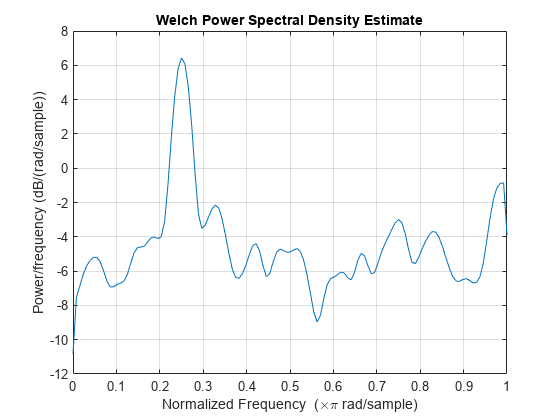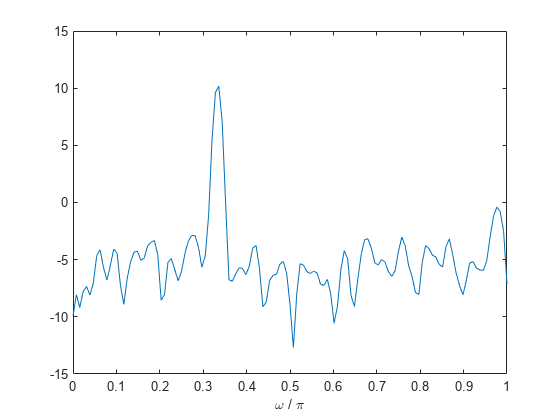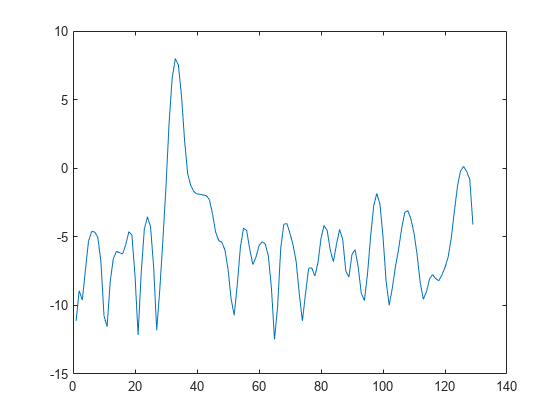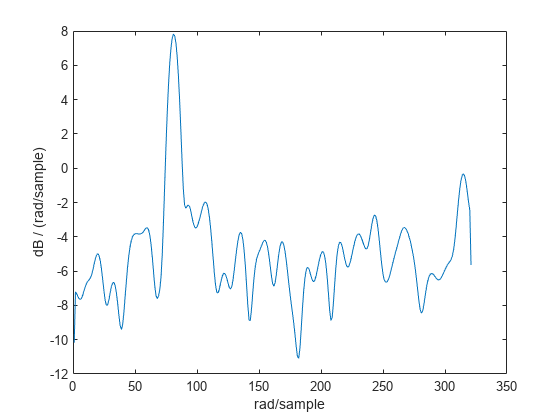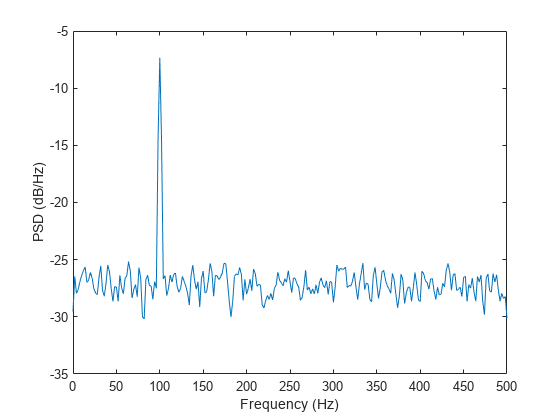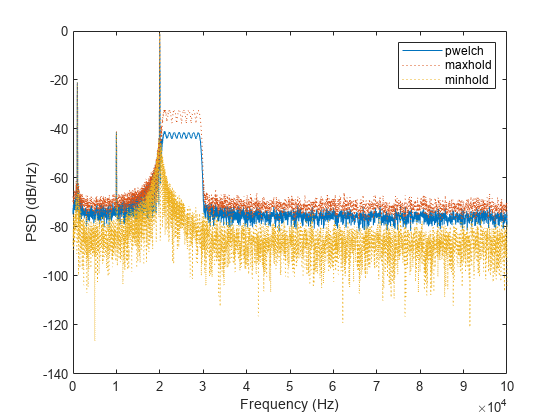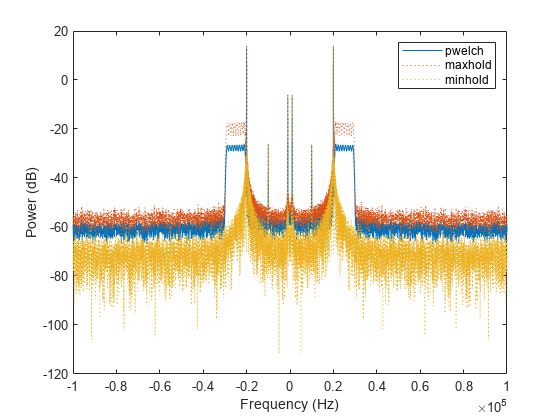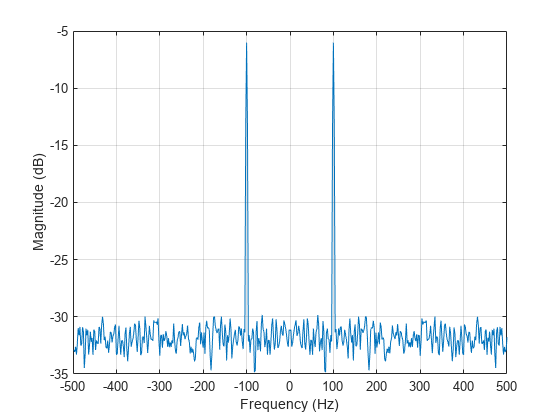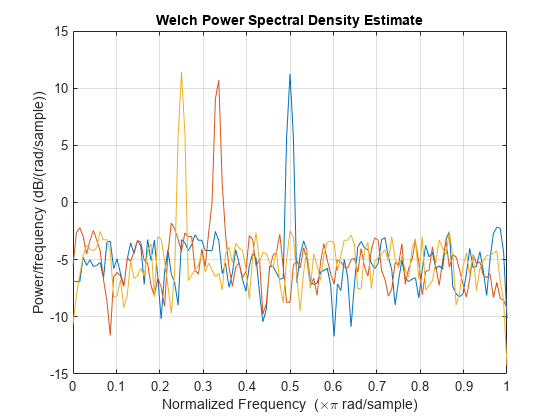pwelch
韦尔奇的功率谱密度估计
语法
说明
pxx = pwelch(x)x 的功率谱密度 (PSD) 估计值 pxx。如果 x 是向量,则它被视为单通道。如果 x 是矩阵,则会针对每列独立计算 PSD 并将其存储在 pxx 的对应列中。如果 x 是实数值,则 pxx 是单边 PSD 估计值。如果 x 是复数值,则 pxx 是双边 PSD 估计值。默认情况下,x 被分成尽可能长的段,以获得接近但不超出 8 个重叠率为 50% 的段。对每段使用一个汉明窗进行加窗处理。对各个修正周期图求平均值以获得 PSD 估计值。如果您无法将 x 的长度精确地分成重叠率为 50% 的整数段数,x 会相应地截断。
[___, 在 pxxc] = pwelch(___,'ConfidenceLevel',probability)pxxc 中返回 PSD 估计值的 probability × 100% 置信区间。
[___] = pwelch(___, 在 spectrumtype)spectrumtype 指定为 'psd' 时返回 PSD 估计值,在 spectrumtype 指定为 'power' 时返回功率谱。
不带输出参量的 pwelch(___) 在当前图窗窗口中绘制韦尔奇 PSD 估计值。
示例
输入参数
输出参量
详细信息
参考
[1] Hayes, Monson H. Statistical Digital Signal Processing and Modeling. New York: John Wiley & Sons, 1996.
[2] Stoica, Petre, and Randolph Moses. Spectral Analysis of Signals. Upper Saddle River, NJ: Prentice Hall, 2005.
